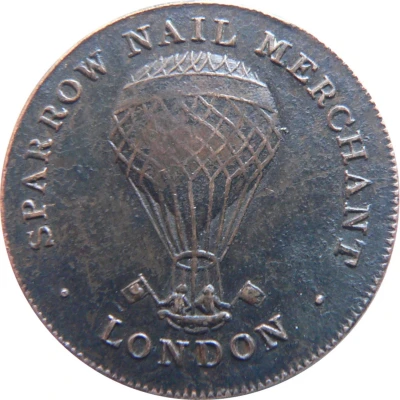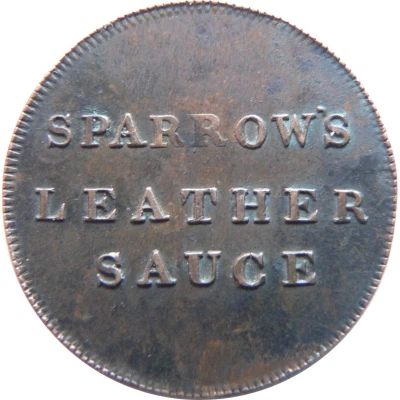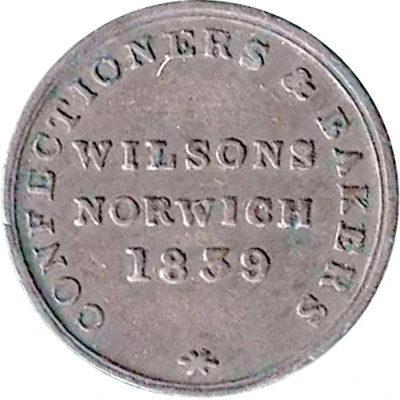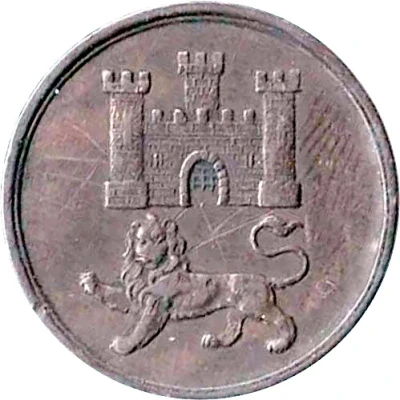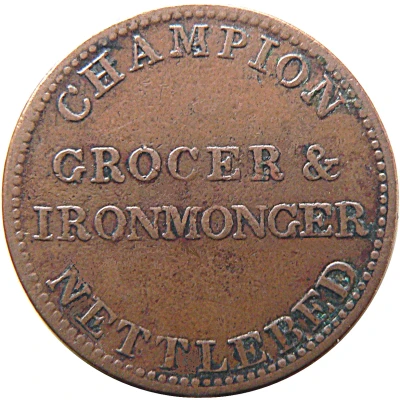
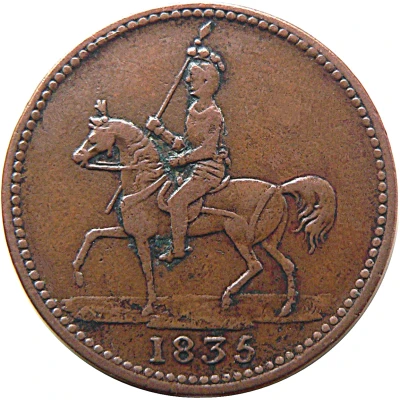

© ZacUK
1 Farthing Oxfordshire - Nettlebed
1835 year| Copper | - | 21.6 mm |
| Location | United Kingdom (United Kingdom, British Overseas Territories and Crown Dependencies) |
|---|---|
| Type | Medals › Advertising medallions |
| Year | 1835 |
| Value | ¼ Penny (1⁄960) |
| Composition | Copper |
| Diameter | 21.6 mm |
| Thickness | 1 mm |
| Shape | Round |
| Technique | Milled |
| Orientation | Medal alignment ↑↑ |
| Demonetized | Yes |
| Updated | 2024-11-14 |
| Numista | N#109188 |
|---|---|
| Rarity index | 90% |
Reverse
A mounted Knight Errant on horseback, on ground to left, spear in right hand. Date below, beaded border
Script: Latin
Edge
Plain
Comment
Trade tokens continued to be issued by inn keepers and tradesmen from time to time in the 18th century to supplement for the lack of small coinage minted by Government - although no Nettlebed examples of that period exist today. During the early 1800's William Samuel Champion had a business in Watlington Street, just below the old Sun inn, described variously in the Gardener’s (1852) and Post Office (1847 & 1854) Directories as “grocer, draper, ironmonger, stationer, druggist and manufacturer of British wines.”A sample token issued by him, now referred to as “Champion’s Nettlebed mounted knight farthing 1835”, diameter 21mm, has recently been discovered. The obverse shows the wording “Champion Nettlebed, Grocer & Ironmonger” and a mounted knight on the reverse with the date 1835. The figure is thought to represent the King’s Champion, making a play on the issuer’s name.
Tokens were issued by a wide range of tradesmen at the time to encourage trade. Some owners of businesses paid staff with tokens which could only be used to buy goods from the employer often at highly inflated prices, which meant a lowering of actual salary and disposable income. However, tokens had a fatal flaw - they could generally only be used in the shop or inn that issued them. So their decline was inevitable - helped also by official crackdown. The Champion token is now also in the Museum of Oxfordshire Museum.
William Champion appears to have gone out of business around 1855. There does not seem to be a family connection with Champion’s ironmongers in Wallingford and Henley (now closed). He is recorded as trustee of the newly established Nettlebed Congregational Chapel in 1840.
The reverse design is probably a symbol of the issuer's name.
